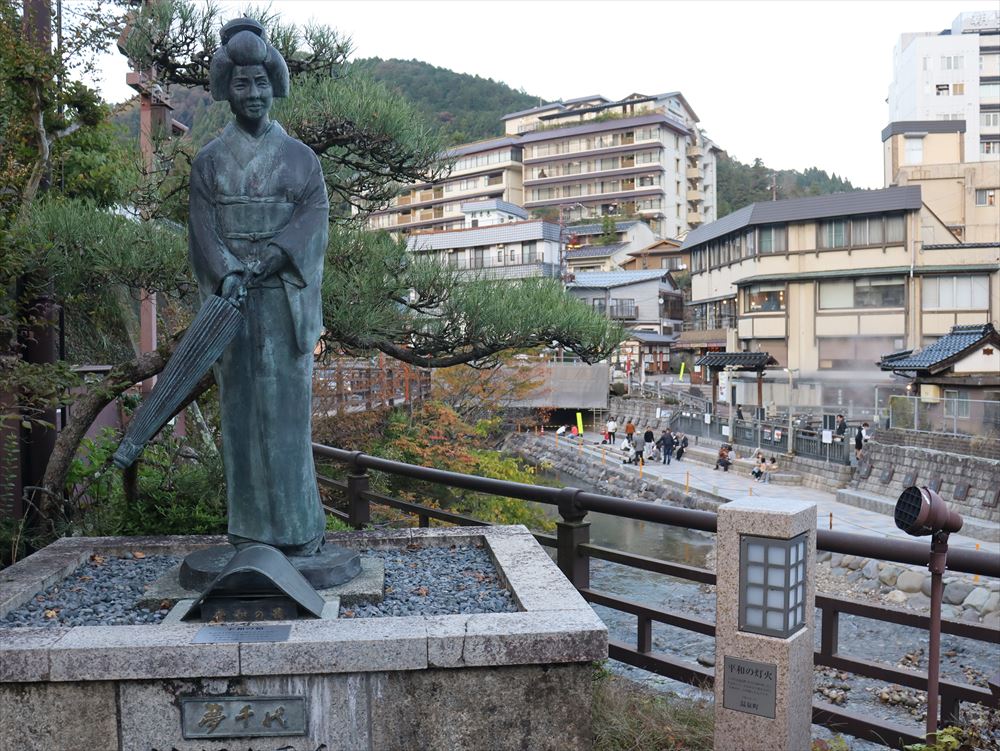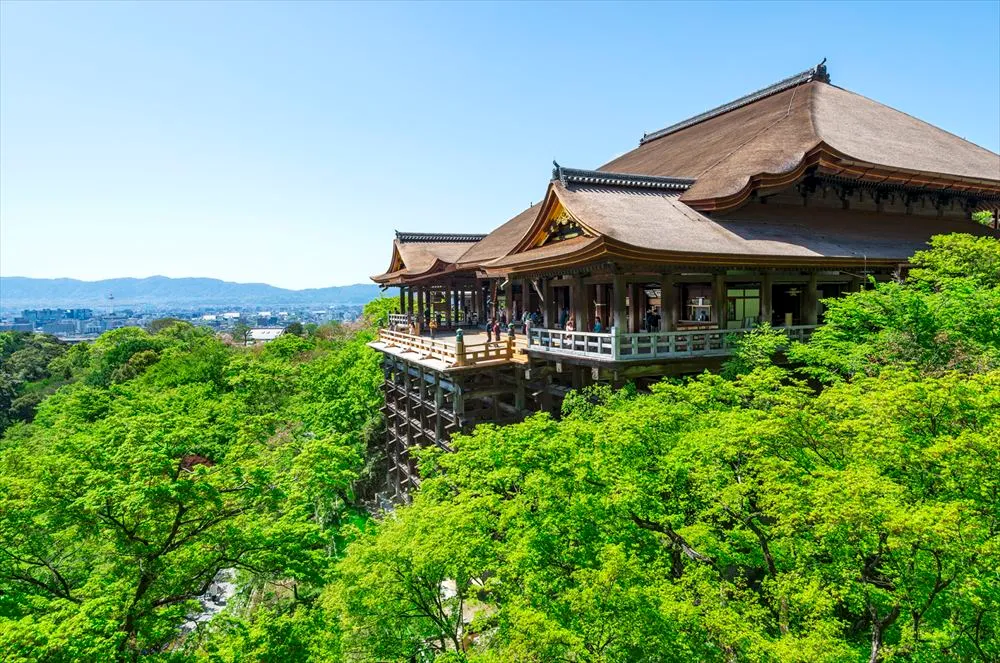The northern Kansai region, particularly the North Kansai area, is home to numerous attractive spots, including the breathtaking Amanohashidate and the delightful onsen-hopping experience of Kinosaki Onsen. Among these gems lies the Kumihama district of Kyotango City, a town near Kinosaki Onsen where visitors can enjoy historical sites and art.
Extend Your Journey from Kinosaki Onsen! A Day Trip to Explore History & Art in Kumihama, Kyotango
- Getting to Kumihama from Kinosaki Onsen
- Relive History at the Gosho Inaba Honke (Inaba Family Merchant Residence)
- The Flower Temple "Nyoiji"
- Lunch at "Mori no Sanpomichi Tofu Café," a Repurposed Former Town Hall
- A Cultural Retreat in the Forest: "Wakuden no Mori"
- Kyoto Tango Railway's Sightseeing Train: "Tango AO-MATSU"
Getting to Kumihama from Kinosaki Onsen
If traveling from Kinosaki Onsen by train, transfer from the JR line to the Kyoto Tango Railway at Toyooka Station. Be sure to exit the JR ticket gates and move to the Kyoto Tango Railway gates. The journey from Kinosaki Onsen Station to Kumihama Station, including transfer time, takes approximately 30 to 40 minutes.


Relive History at the Gosho Inaba Honke (Inaba Family Merchant Residence)
Kumihama flourished as a castle town during the Edo period (1603–1868), and traces of that era can still be found throughout the town. While the area can be easily explored on foot, visitors can also rent bicycles at the tourist information center near the station.

A ten-minute walk from the station reveals an impressive mansion: the former residence of the influential Inaba family, known as the “Gosho Inaba Honke (“Inaba Family Merchant “Residence”). The Inaba family accumulated immense wealth through shipping during the Edo period. In the Meiji era (1868–1912), they invested their private fortune into regional development projects, such as the railway line connecting Toyooka and Kumihama, which I rode on today. The mansion is now open to the public, offering insights into the Inaba family’s significant contributions to the area’s history and economy.
 The garden, visible from the first floor, offers a serene and calming view. Each room in the main house features displays about the history of the Inaba family as well as seasonal exhibits, such as those celebrating Tanabata. From January to April, the mansion hosts a Hinamatsuri (Doll Festival) event, showcasing generations-old, luxurious hina doll displays that are truly breathtaking. In 2025, this event will run from January 4 to April 3.
The garden, visible from the first floor, offers a serene and calming view. Each room in the main house features displays about the history of the Inaba family as well as seasonal exhibits, such as those celebrating Tanabata. From January to April, the mansion hosts a Hinamatsuri (Doll Festival) event, showcasing generations-old, luxurious hina doll displays that are truly breathtaking. In 2025, this event will run from January 4 to April 3.


On the second floor, you’ll find the “Newlyweds’ Room,” specially designed for the 13th head of the Inaba family. True to its name, the room features a heart-shaped partition, adding a unique and romantic touch. It has become a popular spot for photos.


A visit to the “Gosho Inaba Honke” would not be complete without trying their famous botamochi, a traditional Japanese sweet made of sticky rice wrapped in sweet red bean paste. You can enjoy it at Ginshosha, a tea building adjacent to the main house, while gazing out at the garden. I had the botamochi with high-grade gyokuro green tea as a set for 630 yen (tax included).



The property also boasts a renovated warehouse museum, a shop selling local specialties, and a hands-on workshop, offering plenty to see and do during your visit.
| URL | https://www.inabahonke.com/ |
The Flower Temple "Nyoiji"
While exploring nearby attractions at the “Gosho Inaba Honke,” I was recommended to visit Nyoiji, a temple by the sea, and decided to give it a try. Strolling through the nostalgic streets, I made a quick stop at a shop selling Kumihama’s specialty “tai senbei” (sea bream-shaped rice crackers). After about a 15-minute walk, I arrived at the temple.

Nyoiji, founded during the Nara period (710–794), is known as the “Flower Temple.” Its grounds are adorned with seasonal natural beauty throughout the year, including mitsuba azaleas, rhododendrons, and vibrant autumn foliage.




The temple buildings are situated on a slightly elevated area, offering glimpses of the sea through the trees. During my visit, the autumn leaves had just begun to turn. The combination of the colorful foliage and the main hall created a picturesque scene. I’d love to return in spring to see the azaleas in bloom.
| URL | https://nyoiji.com/ |
Lunch at "Mori no Sanpomichi Tofu Café," a Repurposed Former Town Hall
After visiting Nyoiji, it was time for lunch. On the way back to the station, I stopped by Mori no Sanpomichi Tofu Café, located in the repurposed former Kumihama Town Hall. This café is known for its healthy menu featuring tofu, soy milk, and other soy-based ingredients.



The interior, with its warm wooden accents, provided a cozy and relaxing atmosphere. I opted for the weekly lunch set (1,000 yen, tax included), which that day featured tofu pulp with sweet-and-sour vinegar sauce, yudofu (boiled tofu), and more.
A Cultural Retreat in the Forest: "Wakuden no Mori"
After returning to the station, take a bus to Wakuden no Mori, home to an art museum and a restaurant. Board the Tango Kairiku Kotsu bus departing from Kumihama Station at 12:45 PM, get off at Tani Kogyo Danchi-mae, and walk for ten minutes to arrive.

Wakuden no Mori was established by a Kyoto-based restaurant group to give back to the area of their origins, now Kyotango City.

One highlight is the “House in the Forest: Anno Mitsumasa Museum.” This museum showcases the works of Anno Mitsumasa, a painter and picture book author, whose gentle watercolor art brings a sense of calm. Designed by architect Ando Tadao, the museum itself is a masterpiece worth exploring both inside and out.


Adjacent to the museum is the Workshop Restaurant wakuden MORI, where you can enjoy meals made with local ingredients and shop for original products.



During my visit, the garden trees surrounding the restaurant were beautifully adorned with autumn foliage. Dining or enjoying coffee while taking in the seasonal views of the garden is an exceptional experience.
| URL | https://mori.wakuden.kyoto/ |
Kyoto Tango Railway's Sightseeing Train: "Tango AO-MATSU"
From the bus stop, take the 2:50 PM bus and arrive back at Kumihama Station at 3:10 PM. From there, catch the 4:22 PM train bound for Toyooka. After a brief stroll around the station area, I boarded the train, which turned out to be the sightseeing train “Tango AO-MATSU.”


The Kyoto Tango Railway offers several sightseeing trains, including the restaurant train “Tango KURO-MATSU” and the reservation-only café train “Tango AKA-MATSU.” However, “Tango Aomatsu-go” does not require reservations, making it an easy and spontaneous option if your schedule aligns. The interior of the train features extensive use of wood for its seats and tables, creating a warm and inviting atmosphere. There are even large sofa-style seats that enhance the enjoyment of the journey.



The ride to Toyooka takes just 15 minutes, but it was such a delightful experience that it felt too short.
I arrived at Toyooka Station at 4:36 PM. From here, you can take an express train to Kyoto or Osaka, making it possible to return the same day. The Kumihama area of Kyotango City is filled with historical architecture, scenic landscapes, and art. It’s a highly recommended destination for those looking to escape the crowds of more famous tourist spots and enjoy a calm, personalized travel experience.










